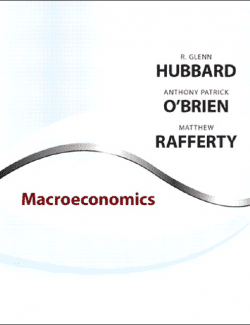Description
Macroeconomics: A European Perspective will give students a fuller understanding of the subject and has been fully updated to provide broad coverage of the ongoing economic turmoil in Europe. It’s unified view of macroeconomics helps students to make the connections between the short, medium, and long run.
Features Updated chapters on the financial crisis, European economic and monetary integration, the Euro, and sovereign debt Graphs and tables Focus boxes expand on macroeconomic events Margin notes provide extended definitions and give students additional context Need extra support?
The book is built on one underlying model, a model that draws the implications of equilibrium conditions in three sets of markets: the goods market, the financial markets, and the labour market. Depending on the issue at hand, the parts of the model relevant to the issue are developed in more detail while the other parts are simplified or lurk in the background. But the underlying model is always the same. This way, you will see macroeconomics as a coherent whole, not a collection of models. And you will be able to make sense not only of past macroeconomic events, but also of those that unfold in the future.












Leave us a comment
No Comments